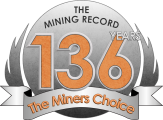Phase One Exploration At The Copper Hill Project
Phase One Exploration At The Copper Hill Project
VANCOUVER – Manning Ventures Inc. reported that Phase One exploration is underway at the Copper Hill Project, located within the Walker Lane Trend, Nevada. Geological personnel are on site and conducting phase one work of the staged exploration program at the Copper Hill Project, within the Walker Land Trend. The first phase of target generating work consists of detailed geologic mapping, soil geochemistry, and a property-wide gravity survey. These programs will be integrated to develop a comprehensive picture of the project. The results will be combined with all available historic data to outline target areas that can be tested with core and reverse circulation drilling.
Geologic mapping will add details to the property-wide geologic map completed in the early 2000’s. Copper Hill is centered on a Jurassic Age quartz monzonite porphyry that intrudes the surrounding Triassic Age Luning Limestone, which was then cut by a variety of intrusive dikes. Zones of porphyry-related copper and gold-bearing skarn mineralization occur at the intrusive-limestone contacts and along fault zones in the intrusive.
Detailed mapping will focus on defining: The extent and location of the skarn mineralization; Delineating skarn mineralization zoning details, around the historic mining and other areas of the project with anomalous copper and gold in the rock geochemistry; and Delineating porphyry-copper alteration zoning that may provide a vector to a hidden porphyry copper type target.
A soil geochemistry program to collect approximately 220 soils is laid out to sample rock contact/skarn zones, fault zones interpreted from a ground magnetic survey, and areas covered by shallow colluvial gravel. Sites are spaced every 61 meters (200 feet) on north-south lines spaced 91 meters (300 feet) apart. Samples are laid out to outline and extend the areas of high-grade and anomalous copper, gold, and molybdenum mineralization sampled in the historic rock chip samples. The samples will be analyzed using a 4-acid digestion method which will provide analyses for economic minerals plus trace elements that are known to be associated with porphyry-related skarn mineralization (silver, zinc, bismuth, and tin).
The gravity geophysical program will aid in determining the extent of the intrusive and limestone rocks. Sample locations are laid out to provide enough points to show the density contrasts between the different lithologies. This will provide data to help delineate the various rock types and define fault zone orientations at depth, below the surface.




Comments (0)